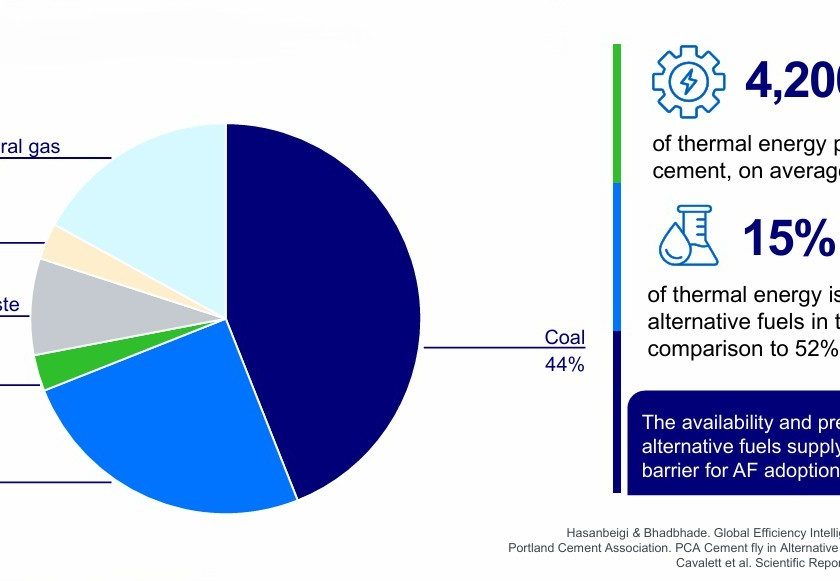It has not been the year anyone was expecting. That is as true in the cement industry as anywhere else. The impact of COVID-19 has brought many challenges, perhaps most visibly in the headline figures for cement demand around the world. But it has impacted the industry in other, more subtle, ways too: from sourcing fuels in a locked-down world to operating a plant in socially-distanced times.
COVID-19 and Cement Demand
Global demand will almost certainly be down on original forecasts for the year – although by how much will depend on the county. In China, for example, demand may actually be ahead of expectations, thanks firstly to the timing of the country’s lockdown and secondly to the Chinese government’s bullishly stimulatory response, Ian Riley, CEO of the World Cement Association (WCA), told Cement Americas.
China was the first country to enter lockdown. It did so in February, a month that is largely taken up by Chinese New Year celebrations. “Construction sites are often closed over this period, as migrant workers return home for the festivities,” explained Riley. “The impact of the country’s lockdown on cement demand was therefore much more muted than in other countries, such as India, where lockdown occurred at a traditionally active time for the construction industry ahead of the Monsoon.”
By April, the cement industry in China was “experiencing demand that was slightly ahead of last year, making up for the drops in the first quarter,” continued Riley. And the outlook for the longer term is more positive still: “the government has brought forward infrastructure projects to deal with the overall economic downturn caused by COVID-19. As a result, demand for the next three years is expected to be more buoyant than was expected before the pandemic.”
Elsewhere, the impacts are likely to be more in line with India’s experiences, where demand is expected to be lower by around 15% this year, while at the worst end of the spectrum, some UAE producers are anticipating demand to halve this year.
Going forward, there is likely to be a split between those countries able to afford to follow the Chinese example of economic stimulus and those that cannot. The latter will most likely be in the developing world, according to Riley, where countries simply do not have the financial capacity to invest in their economies. Unless they can access lines of credit – for example, as South Africa has done with a $4.3 billion emergency loan from the IMF – these countries (and their cement industries) will struggle to recover.
Beyond Demand: Changing How We Work
The impact of COVID-19 has, however, reached far beyond what can be measured in terms of demand: it has altered the way the industry works.
For example, social distancing has limited the number of people who can work at a plant. “India is a good example of this,” noted Riley. “Typically, plants in India have had a lot of employees. But during the pandemic, they have had to work with many fewer, perhaps 30-40% of usual staffing levels. Initially, this had an impact on output but, over time, Indian cement plants have learnt to manage the impact and recover their production to usual levels with much fewer staff.”
Because of these enforced changes to working practices, one positive for the industry coming out of COVID-19 may therefore be an improvement in productivity. While this will be beneficial for companies that emerge from the crisis with higher debt levels and more challenging cashflow, it is not without its problems, as Riley explained: “Cement plants are very conscious of their impact on the communities in which they operate and on which they are reliant. Something that cement companies will need to balance is the effect of employing fewer people in those communities – especially in developing countries and regions without the social security nets present in more developed countries.”
The changes to work have also seen changes to the relationship between cement producers and their customers and suppliers. Ironically, the reliance on remote communications – rather than face-to-face meetings – may actually be bringing producers and customers closer together. Remote meetings enable easier and more frequent contact, while the inability to visit sites means that companies are investing much more in preplanning projects to avoid problems that would previously have been resolved by a visit.
“Several companies I have talked to have made a point of proactively reaching out to customers, strengthening the relationships and ensuring they are in a position to offer support,” said Riley. “There is the potential that COVID-19 will result in greater intimacy between cement companies and their customers.”
Similarly, on the supplier side, COVID-19 has changed working methods with more remote support – and even remote commissioning – required. “This remote service takes the form of equipment suppliers and engineering companies connecting via the internet to monitor the plant control centre, as well as using remote camera technology to direct the cement plant engineers to make the appropriate adjustments. Although these technologies have been used for some years in the industry, they’ve become much more widespread and necessary during the pandemic and this has probably led to a step change in their acceptance.”
A final shift that COVID-19 may encourage is in the sphere of health and safety. From a simple awareness point of view, COVID-19 has made us all more aware of health and safety regulations – and that increased awareness may well carry over into the realm of occupational safety. With fewer staff onsite, safety also becomes easier to manage.
“If you look historically, the safety record of the industry is not very good,” Riley said. “When we set the WCA priorities, we realized we had to do more to tackle this, particularly the issues that lead to fatalities. And there’s been a lot done recently to address these issues. But COVID-19 has acted as a reminder that health can have an impact too. It is therefore likely to increase the priority placed on health management – and in ways that go beyond occupational health. For example, companies may also provide more support for community health, particularly in regions where healthcare is less developed.”
What Next?
The initial focus for post-pandemic recovery will be economic. When the worst of COVID-19 is behind us – and there is no real certainty about when this will be – “initially companies will have to focus on rebuilding a sustainable cashflow.” In a relatively short period of time, however, “the issue of sustainability, not only but most importantly global warming, will become even more important than it was a beginning of the year.”
In its Inevitable Policy Response scenario, the Principals of Responsible Investing (PRI) postulates that by 2025, governments around the world will have come under so much pressure from their publics, they will be forced to make more dramatic policy responses to climate change, including carbon pricing at a higher level than we see even in Europe today. This was before COVID-19. With the pandemic focusing minds of sustainable recovery, the pressure could well be stronger.
“In the cement industry, we have traditional levers that we have been pulling for 20-30 years to reduce out carbon emissions: energy efficiency, alternative fuels, and clinker factor,” continued Riley. “If you look at the average performance for the industry compared to best practices, there is still significant improvement to be made across all three. But these levers alone cannot take us to a decarbonized future – and as an industry, we don’t know how to get to zero carbon yet.”
In order to achieve zero carbon, the industry will need to identify and share decarbonization technologies. “This is a key role for industry associations,” concluded Riley. “There are a lot of interesting technologies being developed – nearly all of them at very early stages – but technologies that could potentially allow the industry to achieve full decarbonization.” Or even go further than that. Dalmia Cement set out a vision of negative emissions by 2040 and Riley expects other companies will follow this lead.
“If you look at the volume of material that goes into concrete – 40-50 billion tonnes a year, much of it carbonaceous – this also has a lot of potential to store carbon. The industry could conceivably go from one with very significant emissions to one that is an important part of the solution.”
Conclusion: The Backbone of Development
Non-COVID-19 challenges also remain, particularly the issue of overcapacity, which will continue to impact the profitability outlook of the industry. “There are only a few examples where the industry has remained healthy in the face of this: China – which involved a lot of government intervention and is unlikely to be replicated elsewhere – and Europe, where long experience of price wars has made the major players very wary of them. It will take time for that level of maturity and stability to develop in other regions.”
Ultimately, however, Riley is “reasonably encouraged” about the future. Although demand is likely to remain relatively flat, as lower Chinese demand offsets increases elsewhere, particularly in India and Africa, the use of cement is also not going away: “from the standpoint of the availability of large quantities of materials at low cost, the cement and concrete industries will continue to be backbone of future infrastructure and urbanization long into the future.”



